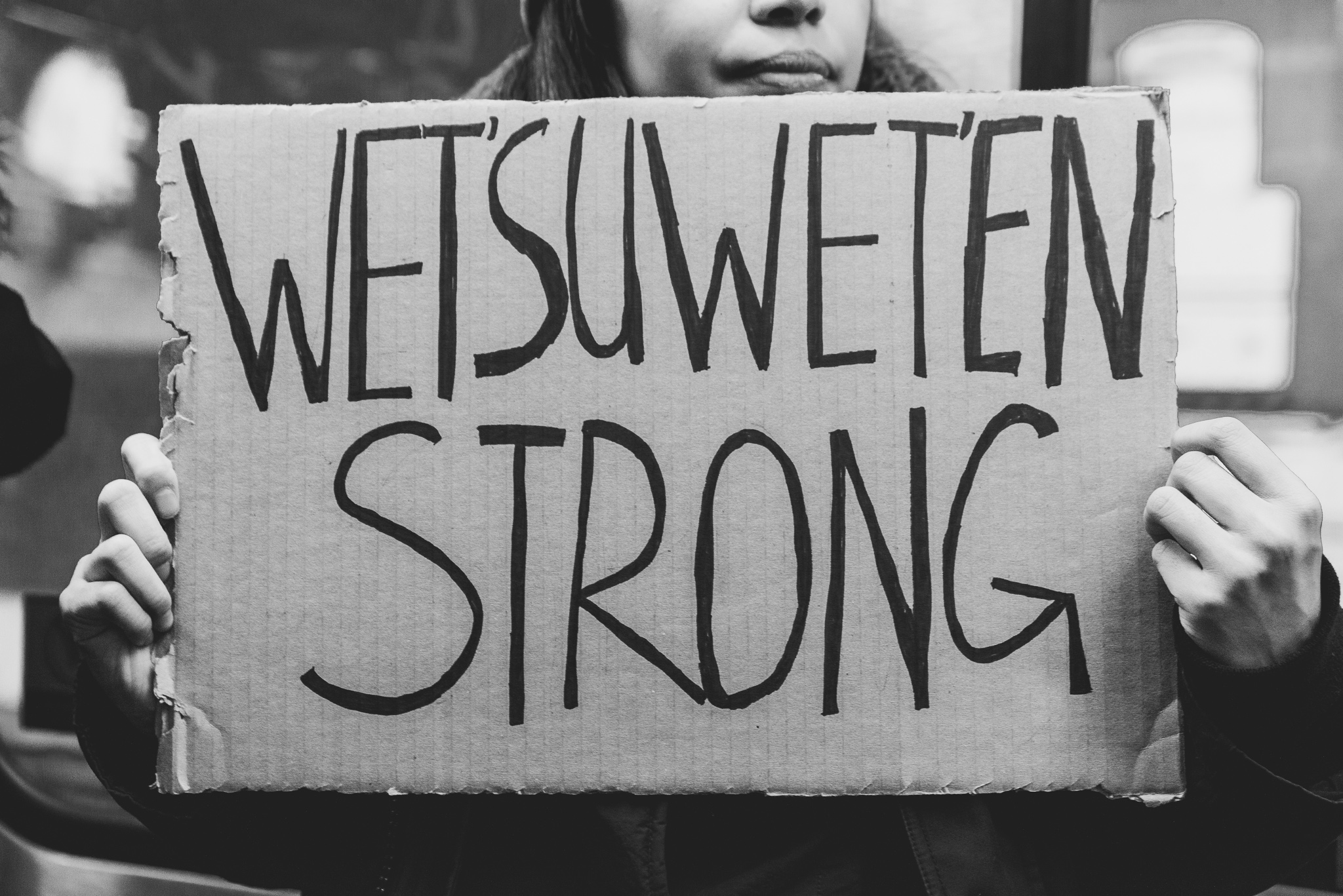Spectrum of Allies
15 Implementing the Spectrum of Allies

CASE STUDY | Wet’suwet’en
What is happening in Wet’suwet’en Nation?
TransCanada Energy (TC Energy) is pushing to place a gas pipeline through the Wet’suwet’en territory in northern British Columbia. To build a pipeline through this Indigenous-owned land, under local, federal, and international law, the clans of that area must give consent to the company to build.
TC Energy, the RCMP, and the federal and provincial governments are openly violating this law. The Unist’ot’en (people of Wet’suwet’en land), other Indigenous groups, and local environmentalists are rightfully angry and lobbying officials to reconsider this decision.
- Active allies: The many groups that have banded together with the Indigenous people who opposed the building on their ancestral lands and active protestors in cities across Canada. These are the people who created blockades, preventing the pipelines from being built.
- Passive allies: The people who sign petitions online against building the pipeline, talking with friends, and sharing posts.
- Neutrals: The general public, they may not understand the laws being broken, or the impact that pipelines have on the environment.
- Passive opposition: The RCMP who are arresting people participating in blockades and protests, as well as Chiefs in the Wet’suwet’en nation who believe the pipeline will benefit the community.
- Active opposition: The government and TC Energy who refuses to listen to The Unist’ot’en.
The chances of succeeding in swaying the active opposition are usually too low to be worth the time, effort, or money it would take. Active Allies should usually focus on the Neutrals or the Passive Allies in order to apply pressure. From there they can group in larger numbers to possibly gain more control of the passive opposition.
Continued Learning
- Read “How to build a base using one on ones” and learn how to categorize your current spectrum of allies as well as increase your knowledge of your allies and what drives them.
- Read “How Campaigns are really created” to get a generalized view of how to create a campaign. Utilizing the spectrum of allies throughout the campaign process allows for greater connection and understanding resulting in a greater likelihood for success.
Attribution
This page contains material taken from:
Gitman, L., McDaniel, C., Shah, A., Reece, M., Koffel, L., Talsma, B., & Hyatt, J. (2018). Introduction to Business. Pressbooks, Rice University. Retrieved June 8, 2020, from https://opentextbc.ca/businessopenstax/chapter/market-segmentation/#fs-idm501098176
Office of the Wet’suwet’en. (2019, January 16). Hereditary Leaders from Across BC Stand Behind Wet’suwet’en and the Assertion of Their Traditional Laws [Press release]. Retrieved from http://www.wetsuweten.com/files/Media_Release_-_January_16,_2019.pdf
Wet’suwet’en Supporter Toolkit 2020. (n.d.). Retrieved July 13, 2020, from https://unistoten.camp/supportertoolkit2020/

